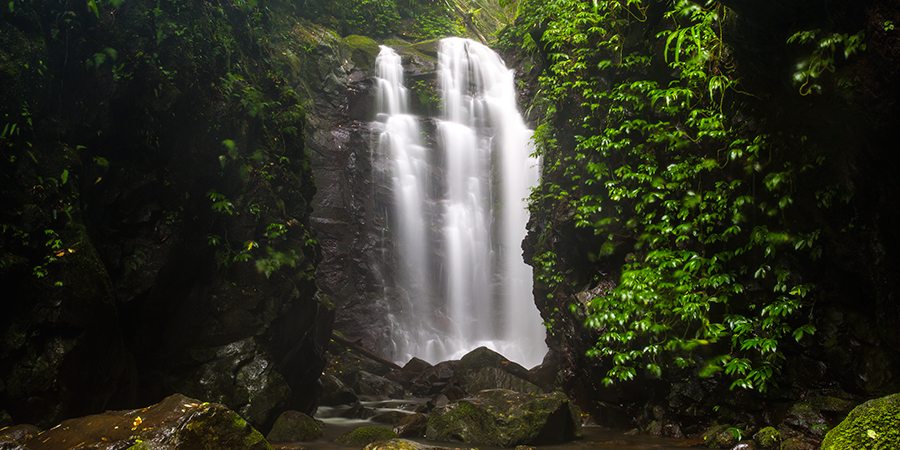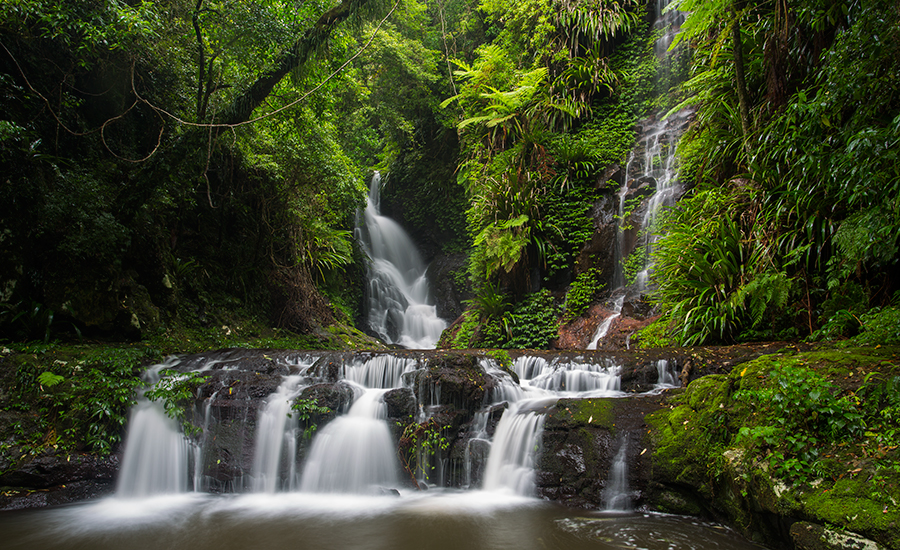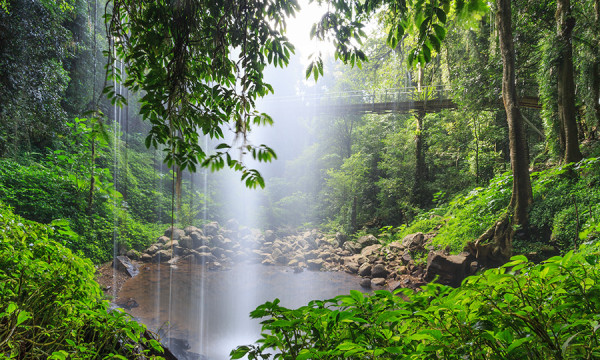The weather forecast for the weekend just gone was cloudy, overcast with a chance of rain! Finally! I had been waiting for this forecast for a couple of months because I was keen as mustard to get into some rainforest action. So on Sunday I woke up early, packed my camera bag, grabbed some snacks and water, my waterproof jacket and threw on my hiking boots and headed down to Lamington National Park with the idea to do a 6 hour hike!

Unfortunately the gps got us lost so we spent 40 minutes backtracking to get back onto the right road. Eventually we got there and decided to do the Box Falls circuit which is a 4 hour, 10km hike. So off we trotted into the jungle with a spring in our step! About an hour into the walk it started to pour down with rain and I mean bucketing down! We decided to keep going because we thought that the rain might stop but no…..it kept raining for the next 3 hours!
Eventually we got to box falls after being attacked by 3,000 leeches and me screaming at Andrew “get them off me” everytime because they freak me out so bad! It was still bucketing down rain as I scrambled across the slippery rocks to set up my tripod in front of the falls. There was so much spray coming off the falls that my camera lens kept getting wet and fogging up and of course I couldn’t find my lens cloth in my bag so had to use my wet shirt to try and dry it. So Im not at all happy with the shot below, firstly I could have found a better composition and secondly you can see the fog from my lens in the photo.

So you’re probably wondering by now what this thing you can’t photograph a rainforest properly without is? Its a circular polariser! I have talked about this briefly in this post here. But seriously, this is what turns an average blown out dull rainforest photo into a lush, green paradise. Its also stops down your camera which means you need to do a longer exposure which then creates the soft fluffy water. A circular polariser also brings out the depths of colour in the scenes for example the greens are greener and the water darker creating more contrast in the shot. It also blocks the reflecting light from the water shining on the rocks and leaves.

I was much happier with this image. Elabana is just a beautiful waterfall and you really can’t go wrong with photographing this one from any angle. I was stoked that the waterfall on the right was flowing because every other time I had been here it was dry! Andrew was holding the umbrella over me, I found a dry part of my shirt to dry the lens, set up my camera on the tripod with the circular polariser on the front, turned the polariser until I could see it was picking up all the greens and clicked away! F11 @ 6 seconds. ISO 50.
Then it was back on the muddy, leech infested track for another two hour walk back to the car in the pouring rain! I was so glad I packed a spare pair of clothes to change into for the 2 hour drive home.
It was an adventure thats for sure and probably the hardest conditions I have had to photograph in so far which is a bit embarrassing! Maybe it was preparing me for a great adventure to come!
I hope you enjoyed this article about the one critical piece of equipment you need to take great rainforest shots. If so, then leave a comment below! 🙂





I just bought a new promaster CPL and I can definitely see the difference in my sky and water shots. I also picked up a new Lowepro bag (Prorunner 300) with the waterproof cover. It keeps all of my kit together (both bodies and three lenses) and is the best one I’ve found. Cheers
Thats awesome Greg! Its amazing the difference a CPL can make to your shots! Just be careful if you are using it with a wide angle lens for the sky though. You can get patches of really dark blue on one side and really light blue on the other side depending where the sun is at the time of taking the shot. I love my Lowepro bag. Ive had it for five years and its still like brand new even though I have taken it all over the world. They are so tough and durable! 🙂
Will a Circular Polarizer work with a Fixed lens camera such as a Panasonic DMC-FZ8?
It should do Lesley. It looks like you are able to screw a filter onto the front of that lens, so in that case yes! Maybe just ask at camera shop though because they would have a better idea! 🙂
Oh Cool! I would never have known about using a circular polariser if I didn’t read this! Thank you! Hopefully my rainforest photos will improve now!
Awesome! So glad that you learnt something Kiki! It will make a huge difference to your rainforest photos! 🙂
Thanks for sharing!!
You’re welcome Andrew! 🙂